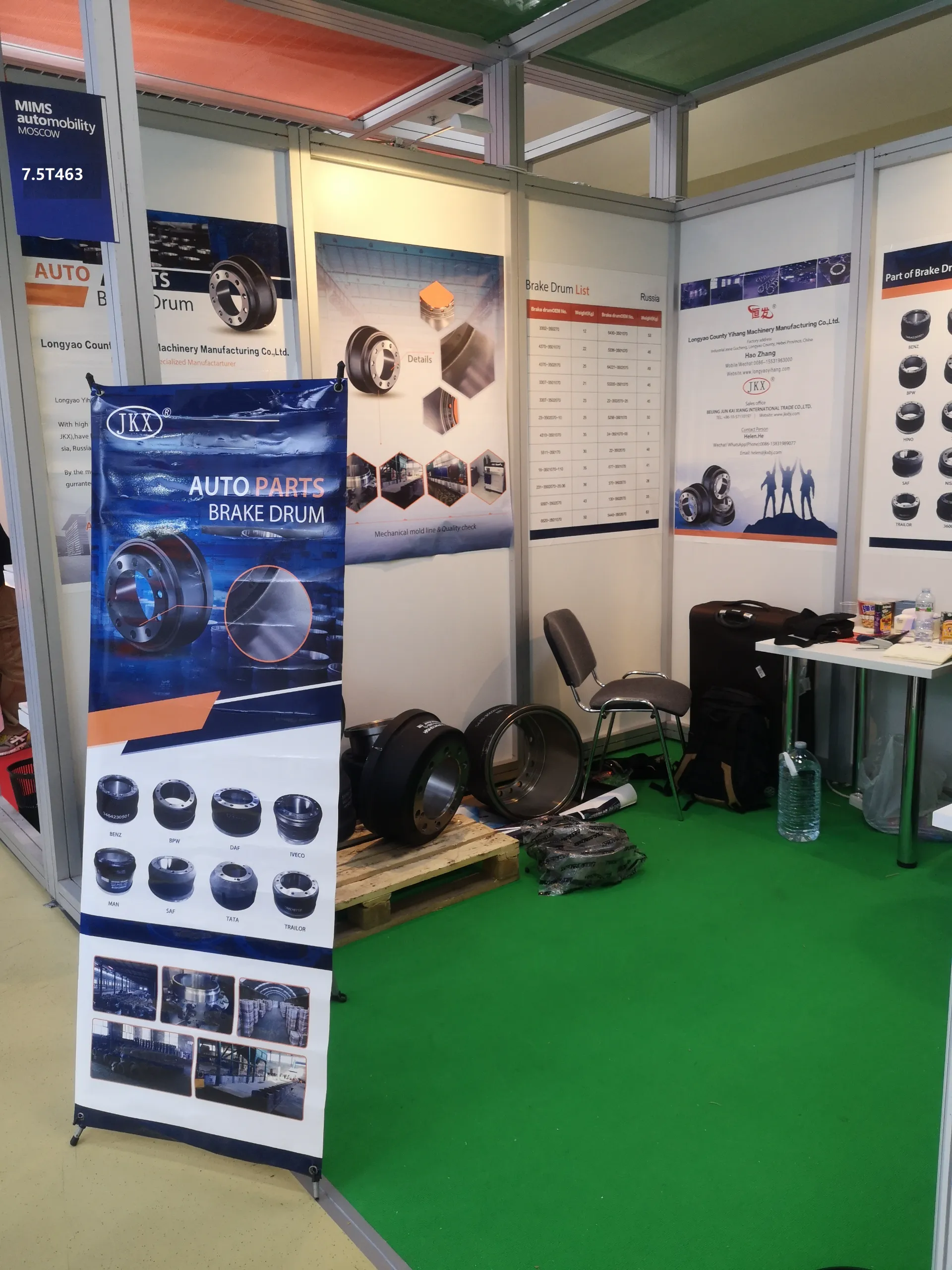12 月 . 03, 2024 17:16 Back to list
Troubleshooting Issues with Stuck Brake Drums and Their Impact on Vehicle Performance
Understanding Brake Drum Seizure Causes, Symptoms, and Solutions
When it comes to vehicle maintenance, one critical component that often goes overlooked is the brake system. Among the parts of the brake system, the brake drum plays a vital role in ensuring safe stopping power. However, brake drum seizure can occur, leading to the potential for severe safety issues and costly repairs. This article explores the causes of brake drum seizure, its symptoms, and the solutions to mitigate such problems.
What is Brake Drum Seizure?
Brake drum seizure happens when the brake drum becomes stuck or unable to rotate freely. This can result from various factors, including rust, corrosion, wear, and overheating. When the drum seizes, it can cause the vehicle's wheel to lock up, resulting in a loss of control and increased stopping distances. As a driver, recognizing the signs of brake drum seizure is essential for maintaining vehicle safety.
Causes of Brake Drum Seizure
1. Corrosion and Rust Brake drums are usually made of cast iron or aluminum, susceptible to rust, especially in regions with high moisture or where road salt is used for de-icing in winter. Corrosion can create a rough surface that interferes with the drum’s operation.
2. Overheating Excessive heat can lead to brake drum distortion or warping, which may cause the brake shoes to stick to the drum. Overheating often results from prolonged braking – such as going downhill or stop-and-go traffic – where the brakes are applied more frequently.
3. Dirty or Contaminated Brake Materials Dirt, grime, or oil contamination on brake components can prevent smooth operation. When foreign materials build up on the brake shoes or drum, they can cause the shoes to stick, leading to seizure.
4. Incorrect Installation or Adjustments Improper installation of brake components can lead to misalignment, causing uneven contact between the brake drum and shoes. Incorrect adjustments can also lead to excessive play, contributing to wear and subsequent seizure.
5. Deterioration of Brake Components Brake shoes and drums wear down over time. When brake pads or shoes become excessively worn and are not replaced in due time, they can become permanently bonded to the drum, causing seizure.
Symptoms of Brake Drum Seizure
The symptoms of brake drum seizure can vary, yet some common signs include
brake drum seized

- Unusual Noises A seized brake drum often produces grinding or squealing noises when the brakes are applied. These sounds indicate that something is wrong within the braking system.
- Vibration If the steering wheel or vehicle vibrates during braking, it could be a sign of an imbalanced or seized brake drum.
- Pulling to One Side If the vehicle pulls to one side when brakes are applied, it could indicate that one drum is seizing while the other functions properly.
- Overheating Excessive heat from the brakes can cause the brake system to smell of burning materials. This may indicate that the drum is not functioning correctly and is being subjected to undue stress.
Solutions to Brake Drum Seizure
Addressing brake drum seizure requires prompt attention to avoid further damage. Here are some recommended steps
1. Regular Inspections Frequent check-ups of the brake system can catch potential issues before they turn into significant problems. During routine maintenance, have the brake components, including drums and shoes, thoroughly inspected.
2. Cleaning and Lubrication Keeping the brake system clean and well-lubricated can prevent corrosion and sticking. Use brake cleaner to remove dirt and contaminates, and apply lubricants to the necessary components, such as the backing plate and adjuster.
3. Replace Worn Parts If brake shoes or drums show signs of excessive wear or damage, replace them. Keeping all components in tip-top shape is essential for the effective operation of the braking system.
4. Professional Help If unsure about the state of your brakes or if you suspect seizure, take your vehicle to a qualified mechanic. Professionals have the tools and expertise to quickly diagnose and solve brake issues.
Conclusion
Understanding brake drum seizure is vital for every driver. Recognizing the causes, symptoms, and solutions can help ensure your brake system remains in optimal working condition. A proactive approach to brake maintenance can lead to safer roads and a more enjoyable driving experience. Always prioritize vehicle safety by keeping an eye on your brakes and addressing any issues before they escalate.
-
Brake Drum for Kamaz Trucks Durable OEM Replacement & High Performance
NewsMay.30,2025
-
Brake Drum Man High-Quality Drum Brake & Shoe Solutions
NewsMay.30,2025
-
High-Performance Brake Drum for Kamaz Trucks Durable Drum Brake Components
NewsMay.29,2025
-
Brake Drum Man High-Quality Drum Brake Drums & Brake Shoes
NewsMay.29,2025
-
Brake Drum MAZ High-Performance & Durable Replacement Parts
NewsMay.29,2025
-
heavy truck brake drums
NewsMar.07,2025
